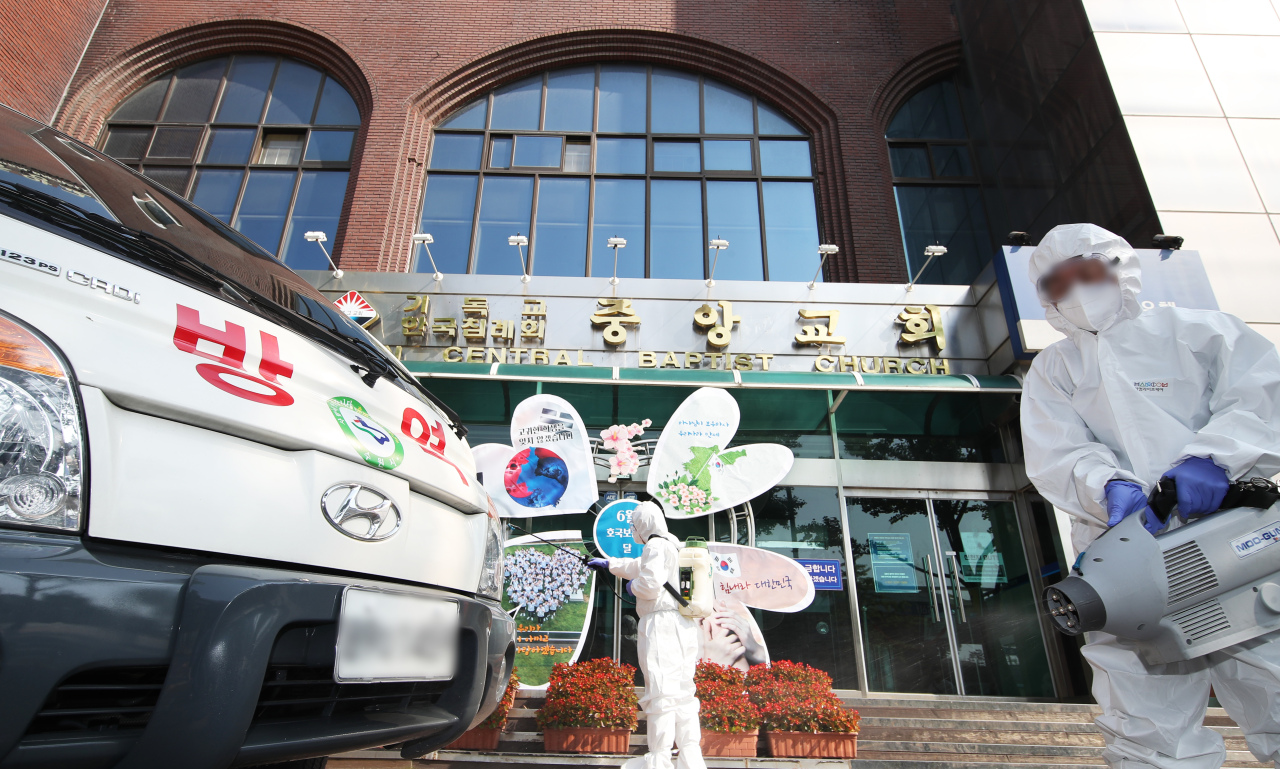 |
Health personnel disinfect a baptist church in Suwon, where at least three cases have been discovered as of Monday. (Yonhap) |
South Korean health officials said Monday that they might add churches to the government's list of risky places for coronavirus infection.
Senior official Yoon Tae-ho at the Ministry of Health and Welfare said in a briefing that measures to stem the spread at places of worship -- which have been sites of a slew of recent outbreaks -- appeared imperative.
“The ministry is evaluating risks of catching or passing on the virus at religious facilities, and possibly designating them as high risk,” he said.
So far, health officials have identified indoor exercise establishments, bars, nightclubs, karaoke lounges and concert arenas as risky places for virus exposure.
According to the Korea Centers for Disease Control and Prevention’s daily situation report, at least 500 people have tested positive in connection to major outbreaks at churches across the country as of Monday, excluding the messianic cult Shincheonji in Daegu that is tied to over 5,000 cases.
The state disease control agency’s Director Jung Eun-kyeong said in a briefing held the same day that safety protocols such as face mask-wearing and maintaining 1 to 1.5-meter distance have not been followed at the churches in question.
“The risk of contagion is always present any time people gather and have contact,” she said.
Yoon of the Health Ministry said the fresh flare-ups in the metropolitan region have spilled over to remote parts of the country that have remained relatively coronavirus-free.
“South Jeolla Province, which has not reported a single case since April 1, has confirmed a patient,” he said, adding there were harbingers of a nationwide spread.
The disease control agency has warned of a second wave in Greater Seoul -- Seoul City, Gyeonggi Province and Incheon -- which now makes up 22.2 percent of the 12,757 total cases.
The rise in number of cases with untraceable transmission routes is also posing challenges for disease control authorities. The KCDC officials said they failed to trace 11.8 percent of new cases reported during two weeks spanning June 15-29 to their sources.
Korea added 42 more cases in the 24-hour period ending midnight Sunday. Among them, 30 were locally transmitted and the other 12 were imported.
11,429, or 89.6 percent, of those diagnosed have been declared recovered and released from care. A further 1,046 patients are still undergoing treatment.
282 people have died from the viral infection, leaving the fatality rate at 2.21 percent.
By Kim Arin (
arin@heraldcorp.com)








